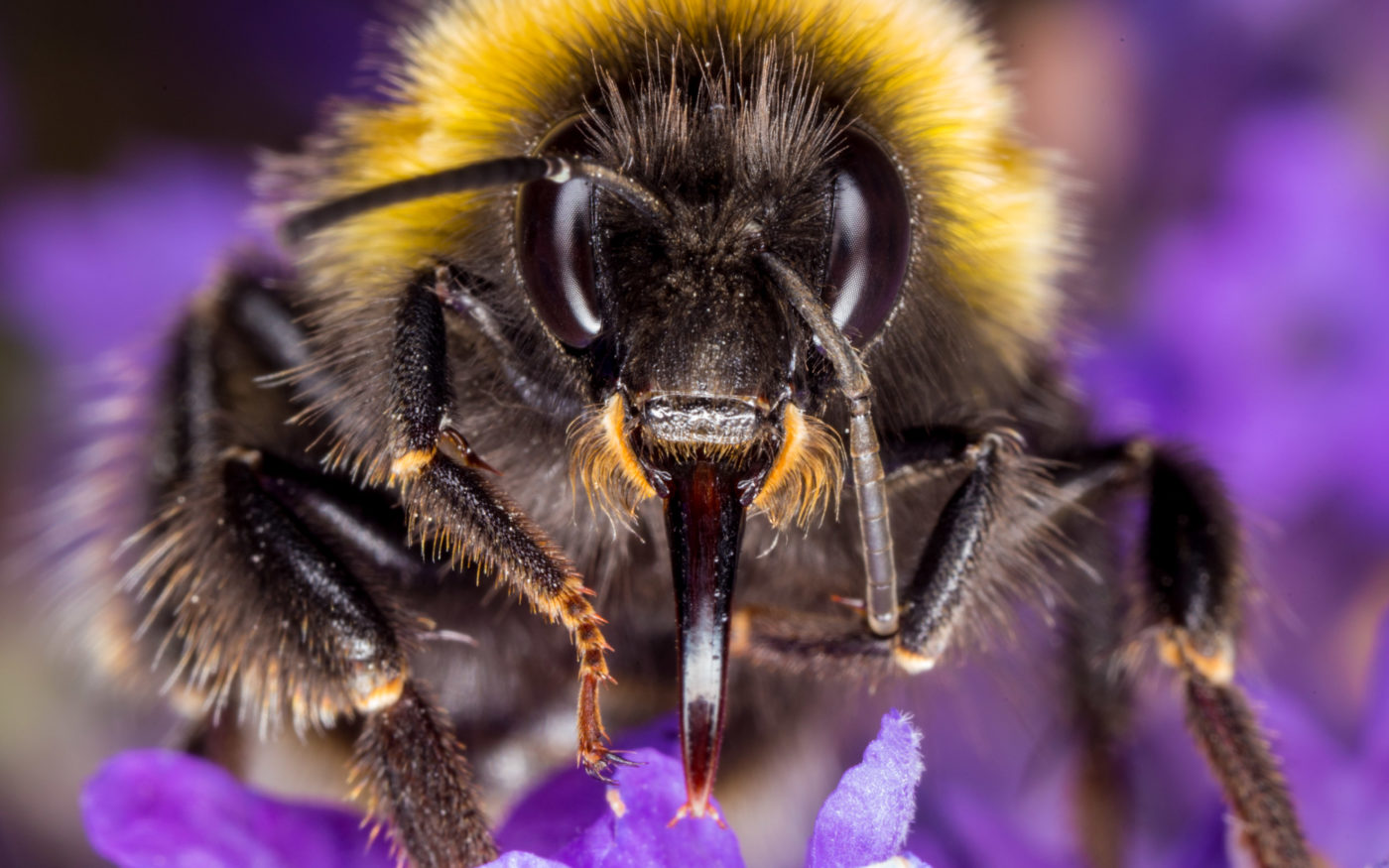Order
Ants, bees, wasps and sawflies
Well known for their pollinating abilities, there are over 250 different species of bee in Britain.
As well as the famous Honey bee Apis mellifera, there are ‘true’ bumblebees, cuckoo bumblebees that parasitise ‘true’ bumblebee nests, and solitary species including leaf-cutter and mining bees. One of the most widespread bumblebee species is the Buff-tailed Bumblebee.
What do they look like?
Buff-tailed Bumblebees are oval shaped and densely covered in hairs, with a dirty yellow band behind the head and across the abdomen.
This species is a 'true' bumblebee with a social colony made up of a Queen, female worker bees and males.
Worker Buff-tailed Bumblebees are 11 - 17mm in length and have a off-white tail with a brown 'buff' edge against the black abdomen. Worker bees vary in size according to their caste or role within the colony, smaller bees tend to the queen, nurse the bee brood and maintain the nest; larger bees leave the nest to forage and bring back pollen and nectar.
The queen Buff-tailed bumblebee is larger at 20mm in length and has a fullly brown 'buff' tail.
Worker and queen Buff-tailed Bumblebees store pollen in a 'basket' on each hind leg, these are shiny cavities surrounded by fringes of hairs, within which pollen is piled up.
Male Buff-tailed bumblebees are around 15mm in length and do not have pollen baskets.
Where do they live?
Buff-tailed Bumblebees live in most lowland areas of Britain, in rural and urban habitats.
Where can they be found?
Buff-tailed Bumblebees are widepread around mainland Britain, except in the far North.
When can you see them?
Queen Buff-tailed Bumblebees can be seen flying in early spring to forage and find nest sites.
Workers then hatch in early summer and are visible foraging in flowers for pollen and nectar.
Male Buff-tailed Bumblebees hatch in late summer and can be seen searching for young queens with which to mate.
New queens fly in late summer locating hibernation sites.
Life cycle
Queen Buff-tail Bumblebees hibernate and emerge in early spring as temperatures rise. After foraging to replenish their energy reserves, used up over winter, they find ground nesting sites often in old small mammal nests, and starts building the colony structure with wax secreted from her abdomen lays the first eggs.
Worker Buff-tailed Bumblebees hatch in spring and either stay within the colony nurturing the young brood, maintaining the hive and looking after the queen; or they leave the colony to forage for nectar and pollen in a range of flowers.
Colonies can grow to several 100 workers through the season, then in late summer males and, if the colony is large enough, new queen Buff-tailed Bumblebees hatch from the brood and mate. The males then die and the new queens forage to find a hibernation site for the winter.
In Southern Britain where winter temperatures are not too low, the Buff-tailed Bumblebee may have a second generation during winter, new queens at the end of summer start new colonies instead of hibernating.
What do they do?
The Buff-tailed Bumblebee has a short tongue so it favours foraging for pollen in short open flowering plants such as comfrey, lavender and a wide range of crop plants. The bumblebee will also bite holes through the base of longer flowers to 'rob' nectar without pollinating them!
Did you know?
The Buff-tailed Bumblebee in Britain is a subspecies Bombus terrestris audax. On continental Europe and the Channel Islands however, there is a different subspecies Bombus terrestris dalmatinus which does not have a buff tail. It is easily confused with another bumblebee species the White-tailed Bumblebee, Bombus lucorum.

